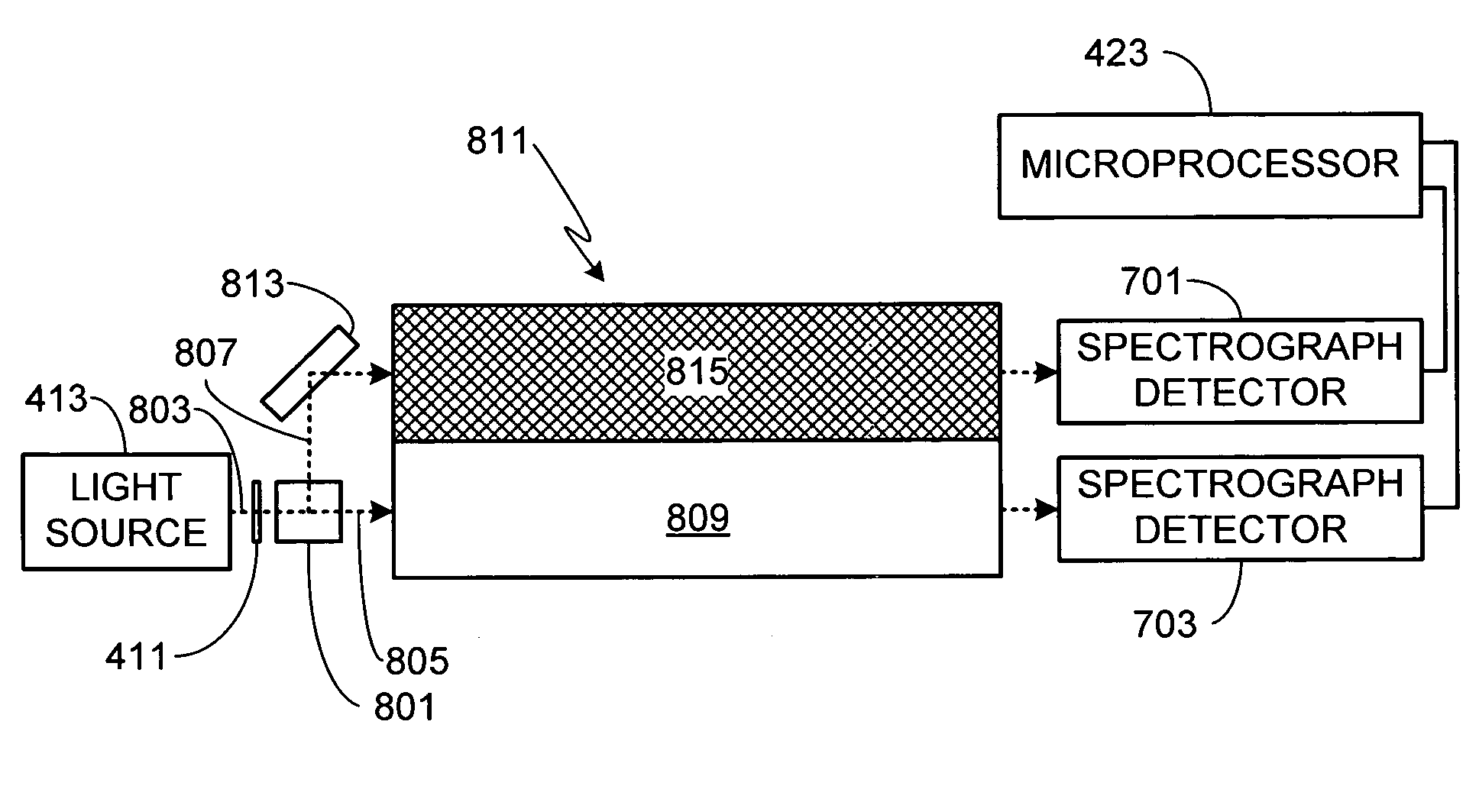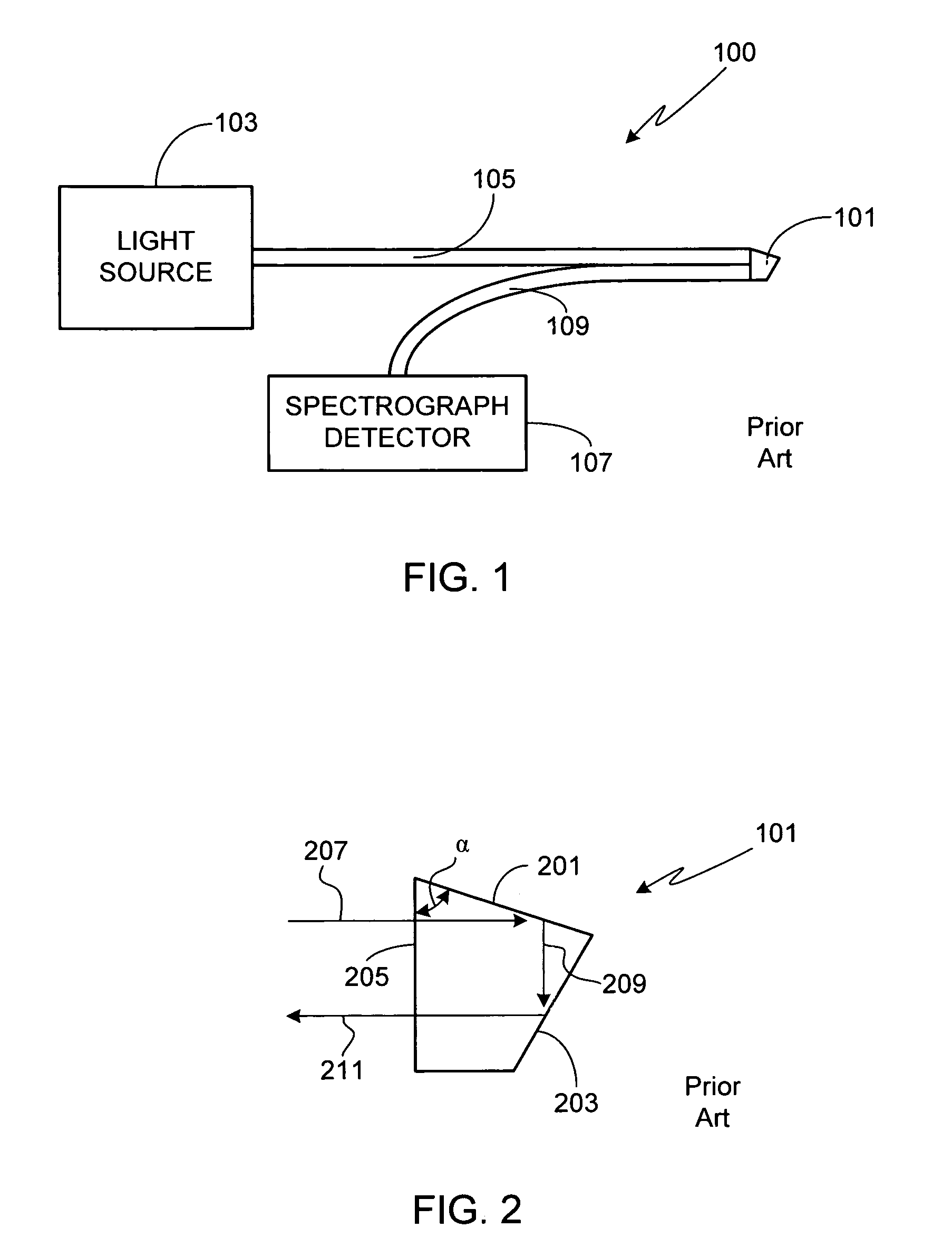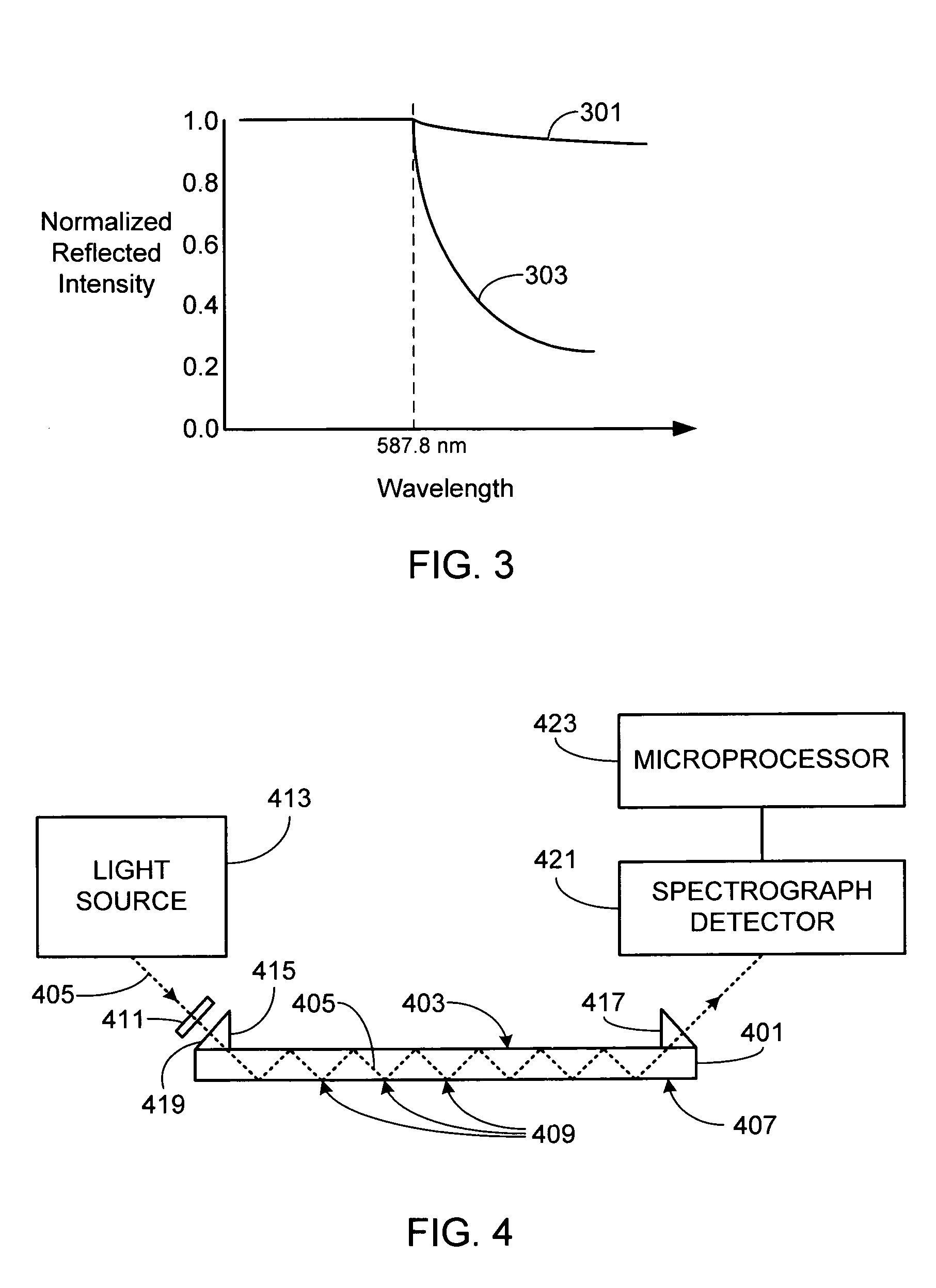Optically amplified critical wavelength refractometer
a critical wavelength, refractometer technology, applied in the direction of optical radiation measurement, instruments, spectrometry/spectrophotometry/monochromators, etc., can solve the problems of limiting the overall in-situ accuracy to the 10sup>6/sup>range, mechanical nature of angular measurements, and limiting the overall in-situ accuracy. to the effect of enhancing the sensitivity of the sensing beam
- Summary
- Abstract
- Description
- Claims
- Application Information
AI Technical Summary
Benefits of technology
Problems solved by technology
Method used
Image
Examples
Embodiment Construction
[0020]FIG. 1 is an illustration of a critical wavelength refractometer in accordance with the prior art, a full description of which is provided in U.S. Pat. No. 4,699,511, entitled Refraction Sensor, the specification of which is incorporated herein. As shown, refractometer 100 is comprised of a probe that includes a prism-shaped sensor 101. Sensor 101 is coupled to a broadband white radiant energy light source 103 by at least one optical fiber 105, and coupled to a spectrograph detector 107 by at least one optical fiber 109.
[0021]As shown in detail in FIG. 2, prism-shaped sensor 101 includes a ground and polished sensing face 201, a mirrored reflecting face 203, and an incident face 205. Angle α, measured between faces 201 and 205, is chosen along with the wavelength range of light source 103 and the material comprising the prism-shaped sensor 101 to cover the index of refraction range of interest for the material to be monitored, i.e., the material in contact with sensing face 20...
PUM
| Property | Measurement | Unit |
|---|---|---|
| thick | aaaaa | aaaaa |
| critical wavelength | aaaaa | aaaaa |
| length | aaaaa | aaaaa |
Abstract
Description
Claims
Application Information
 Login to View More
Login to View More - R&D
- Intellectual Property
- Life Sciences
- Materials
- Tech Scout
- Unparalleled Data Quality
- Higher Quality Content
- 60% Fewer Hallucinations
Browse by: Latest US Patents, China's latest patents, Technical Efficacy Thesaurus, Application Domain, Technology Topic, Popular Technical Reports.
© 2025 PatSnap. All rights reserved.Legal|Privacy policy|Modern Slavery Act Transparency Statement|Sitemap|About US| Contact US: help@patsnap.com



